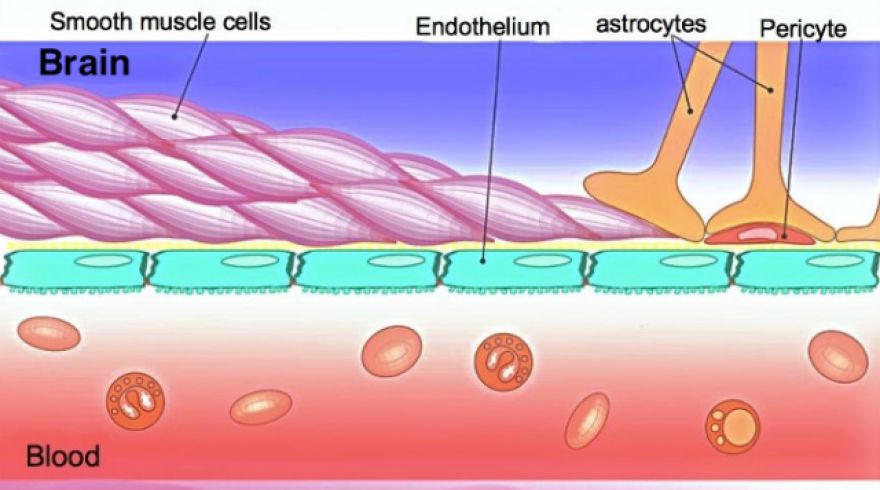
Prospecting for drugs in the cerebral minefield
Share This article
Many modern pharmaceuticals are worth their weight in gold. Unfortunately, only around 5% of our prescribed drugs can cross the blood brain barrier. That means there is a huge untapped reservoir of neurological disease that cannot be mined for profit. Companies that make drugs for neurodegenerative disease, like Biogen, are now coming up with their own
There is no shortage of creative methods to strong-arm the barrier. Favorites among them include of iron oxide nanoparticles, of gold microspheres, and . All of these methods more-or-less ‘work’ in a laboratory setting, but who really wants to go first? Don’t get us wrong — in time each will no doubt be made safe for their particular niche application. However, if the directed-energy helmet that you need to put on when taking your medication has a power cable leading to a box the size of a refrigerator, you might think twice.
The good news is that scientists at Canada’s National Research Council special carrier molecules that are able to ferry drugs across the BBB. The ideal drug to test is an antibody made by Biogen to treat MS. A collaboration between the two groups has already shown that the carrier-antibody fusion molecules work when injected intravenously in rats.
Exactly how the molecules get in is not yet public knowledge, and may not even be private knowledge. Considering what we do know about bypassing the BBB, we can guess that the carrier exploits some of the brain’s natural receptor-based mechanisms for transport. Wiser minds that perhaps the carrier binds to the transferrin receptor which is abundant in the BBB. Everybody needs iron, and the transferrin pathway is the go-to method the brain uses to gets its share. Then there is also Biogen’s own flagship BBB-busting peptide ‘Angiopep-2′ which apparently binds to another yet another transport receptor.
To complicate our efforts to get to the bottom of how this stuff works, Biogen’s own drug, Aducanumab, has some ability to bind receptors directly and gain access to the brain. It has shown some success against Alzheimer’s disease, which as it happens, may result in part from a compromised BBB in the first place. The ‘mab’ at the end of many new high-end pharmaceuticals stands for monoclonal antibody. Originally developed mainly for cancer, they can potentially target almost any kind of disease. These drugs are not your grandpa’s chemotherapy. In the past, chemists could simply pluck their favorite metal toxin straight from the periodic table and bind it to salts and methyl groups to make it soluble in the fatty membranes of the BBB. Nowadays, drugs like these mabs are large and sophisticated biomolecules custom made to order.
Compared to the crude drugs from yesterday (like platinum, arsenic, or even silver) mabs must be carefully grown inside special hybridized cells, rather then simply mined or synthesized in a chemistry hood. This makes them fairly expensive. The NRC-Biogen team’s new drug is known as a single domain antibody (SDA), which as its name clearly suggests, contains a single antibody domain. It’s probably a good idea at this point to keep things as simple as possible, because with any foreign antibody, there will always be some potential immune issues to deal with. Generally, a strong immune reaction would means some brain swelling and more drugs to combat side effects of the main drugs.
Using the brain’s own transport mechanisms to gain access is nothing new. Not just single molecules, but whole cells have the ability to slip into the brain, particularly at locations lacking immunoprivilege. We discussed the need the other day for effective treatments against the when it is holed up inside the immunoprivileged interior of the eye. Blasting your way into the brain with any of the energy beams alluded to above is one thing, but that could be a disaster in the eye. If the smarter and stealthier antibody methods prove successful, there should be lots of potential new drugs to benefit patients, and also increase shareholder value.